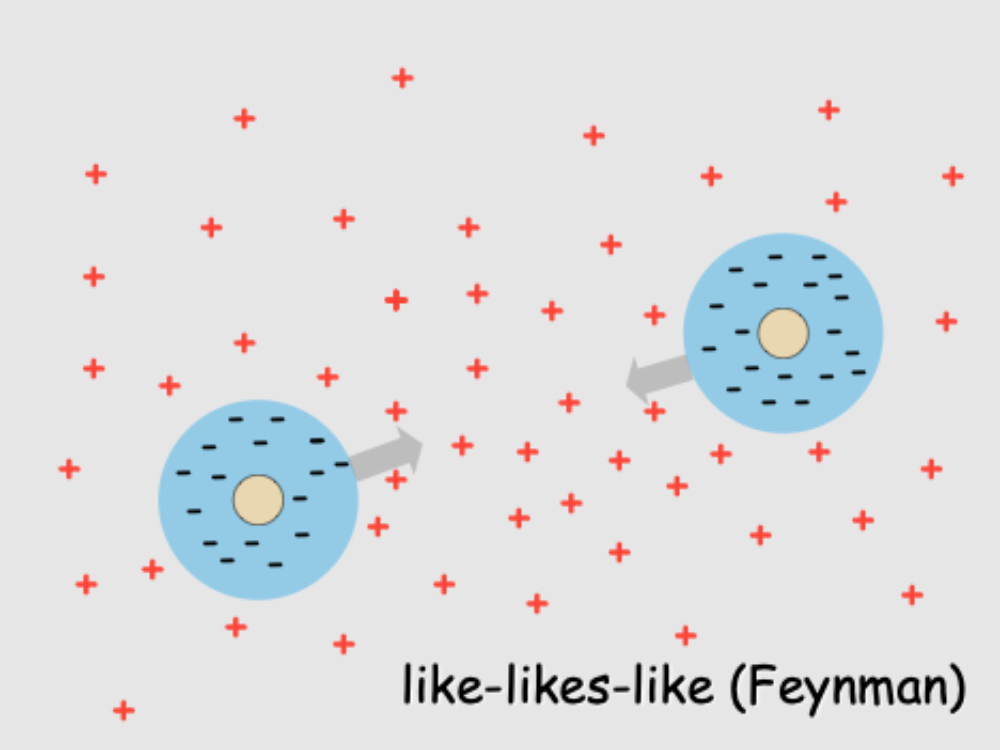Recently, my elder son Seth shared the story of how he rescued a friend sinking into quicksand. He did manage to pull her out -- with some effort. Many of us have had nightmares about sinking into quicksand and never again seeing the light of day. It can be harrowing.
So, why do you keep sinking?
When Seth shared his story I immediately thought about yogurt: colloidal particles are held together to form a gel-like structure. It can remain semi-solid for weeks. But if you perturb it mechanically by scooping out a section, then, by the next day that indentation becomes full of liquid water.
I wondered: might similar behavior occur in quicksand?
Think of sand castles. I described the way sandcastles hold together in my book, The Fourth Phase of Water. The reason centers on the negatively charged EZ water that builds around each particle, the EZ-clad particles held together by the positive charges lying in between.
It was the great Nobel physicist Richard Feynman who first explained the principle. Feynman focused on the charges. He said, like-charged particles are drawn toward one another because of opposite charges lying in between. Thus, he famously opined: “like-likes-like because of an intermediate of unlikes.”
The principle is well illustrated in figure one below. Warring parties will never get together -- unless the proper attractor lies in between. Then, perhaps, they will draw together.
Brought into context, we know that EZs contain a negative charge. Those negative charges obviously repel. So the EZ-enveloped sand particles will never get together. But they can draw toward one another if positive charges lie in between, see figure two. The particles seem to “like” one another. Essentially, that’s why moist sand castles hold together.
That same principle may explain how quicksand operates. Like the sandcastle, quicksand may seem rather firm — until you happen to step into it.
When someone’s footstep perturbs the structure, the delicate force balance is disturbed (like the yogurt example). The charges don’t balance anymore. EZs are broken up. Negative EZ fragments and local positive charges recombine, forming liquid water. So you sink — as though trying to walk on a suspension of particles in water.
What makes matters even worse is the inevitable charge theft. The broken-up EZs caused by stepping are negatively charged, therefore hungering for positive charges — drawn from anywhere. The in-between unlikes fill the bill, but those positive unlikes are always fewer in number than the likes. So the negative EZs continue to crave positives, which get stolen from nearby regions.
That theft utterly destroys the stability of those nearby regions. Their semi-solid consistency disintegrates. The more you kick, the more the EZ transforms, and the further you sink.
That, I believe is why it’s difficult to avoid sinking irretrievably into quicksand. It’s all based on EZ dynamics and Feynman’s like-likes-like principle.
Once you commit yourself to quicksand, escape is near impossible -- unless someone like my son is there for the rescue.
Which brings me back to yogurt. Is yogurt a solid or is it a liquid? Or is it somewhere in between? We generally constrain our thinking of matter as falling into three distinct categories: solid, liquid, and vapor. But yogurt seems to lie somewhere between solid and liquid. And what about raw egg white? Where does that sit on the spectrum? Both those substances exhibit properties lying in between a solid and a liquid. Perhaps they deserve their own classification?
The substances above are generally referred to as gels or colloid crystals. Both share features similar to quicksand and yogurt: a balance of charges holding the substance together. The essential matter, or framework is generally negatively charged. The additional negative charge comes from the EZ water that envelops the matter. So individual components of that matter would ordinarily repel. But buildup EZ water comes with the formation of protons, and it is those protons, gathering in between the negatively charged matter that hold together the entire conglomerate.
So the underlying principle — like-likes-like because of an intermediate of unlikes — applies not just to quicksand but more widely. Feynman’s tongue-in-cheek mechanism is perhaps another one of his legendary contributions to science. Think of that next time you dip your spoon into yogurt (or step into quicksand).

















